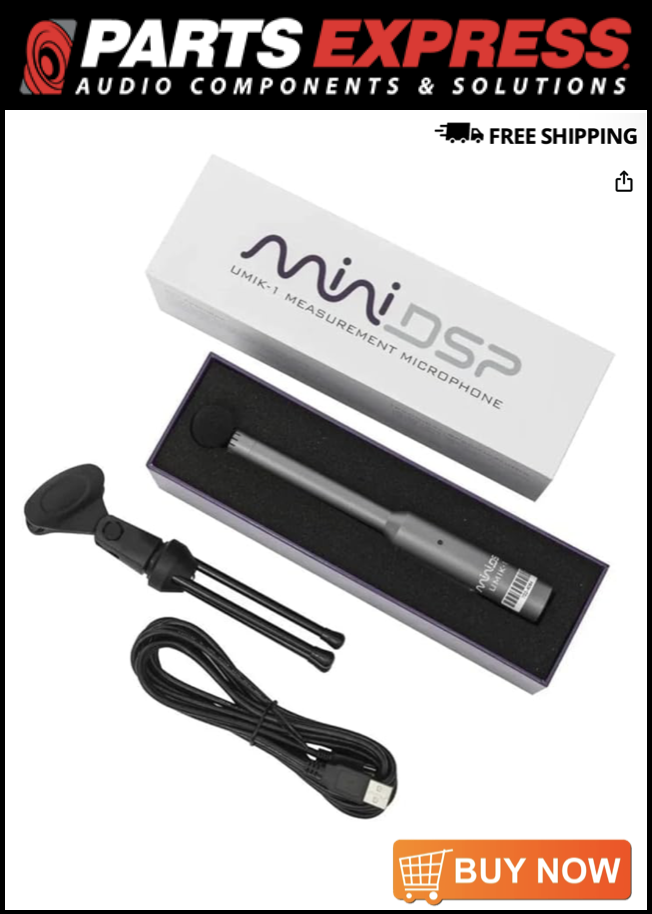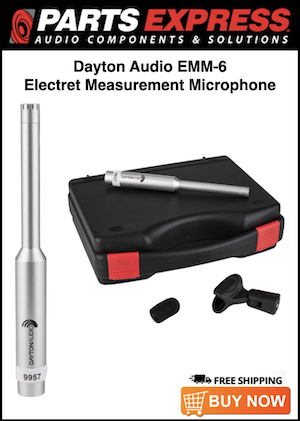Tony V.
Senior Member
More
- Preamp, Processor or Receiver
- Onkyo TX RZ920
- Main Amp
- Samson Servo 600
- Additional Amp
- QSC MX1500
- Universal / Blu-ray / CD Player
- Panasonic 220
- Front Speakers
- EV Sentry 500
- Center Channel Speaker
- EV Sentry 500
- Surround Speakers
- Mission 762
- Surround Back Speakers
- Mission 762
- Subwoofers
- SVS PB13u
- Video Display Device
- Panasonic AE 8000
- Remote Control
- Logitech 1100
- Streaming Subscriptions
- Denon DT 625 CD/Tape unit, Nintendo WiiU, and more
Have you ever wondered what the difference is between a Balanced and Unbalanced connection and why?
I hope his post will help make this much clearer to understand.
First of all this can be a very confusing subject and I will spell this out in plain English without all the mumbo-jumbo.
Most home consumer audio gear that you buy from big box stores use unbalanced analog audio connections that is designed for short distances and low cost. These connections are usually the "rca" type and have a shield and a single positive for the signal.
Below you will see a picture representing an unbalanced connection (a sine wave in this case) and the shield connected to ground which means it has no signal on it.

A line level unbalanced audio signal can be looked at as a low voltage signal and unbalanced audio signals are usually between 200mv and 1volt depending on if it is a fixed or adjustable level.
Given this "lower" voltage audio signal, long distant runs are susceptible to interference and thus is only good for short runs of usually less than 20ft although a good quality cable can go a bit farther.
The problem with using home audio gear with professional audio gear is that the pro gear uses balanced input and output signals. Amps in particular either use a 1/4" Tip Ring Sleeve (TRS) or XLR connector
See below:

The audio signal used in these connectors is at a higher voltage usually 1.5v to 2v and as seen in the graph below has twice the signal as an unbalanced signal.

There are two alternating signals -1.5v & +1.5v and the shield. The advantage of this connection is that when used for long distances the noise (interference) is not only canceled out by the alternating voltages but because its a higher signal voltage it can travel much longer distances (as far as 1000ft) without a booster. The primary factor that allows longer connections with balanced lines has more to do with impedance than voltage. A balanced line has a low impedance (200 to 600 Ohms) while an unbalanced line typically is around 10k impedance.
Now here is the problem, when we try to use pro audio gear with balanced inputs connecting to the home audio equipment with unbalanced outputs you usually get incompatibility problems. These problems consisting of noise (usually 60Hz hum) or the signal coming into the pro gear being to low causing the noise floor to be raised when you boost the signal (sometimes referred to as signal to noise ratio) making the background hiss or hum amplified to the point that it becomes unusable .
On some amps or other pro gear you may have the ability to "short" the two connectors on the 1/4" TRS to make it a TS unbalanced input. The misconception of this option is that the voltage signal is also boosted but this is not normally the case and is still lower than what a balanced signal should have meaning that the amp at MAX on the level controls will not output the full amount of power it can. If your running this configuration and your amp levels are at MAX to achieve the levels you want I suspect that you have this problem as pro amps should not need to be run more than 75% of its max level control.
The fix to this issue is to use a line balancing transformer sometimes called a direct box or something like the Samson S-Convert costing around $50 This properly takes the unbalanced signal and converts it to a balanced signal and raises the voltage.
Adapters can be bought or made to go from XLR to 1/4" TRS as well because on some you only have the XLR outputs
There are also several companies that make consumer grade high quality external amps that have proper unbalanced inputs so looking at that route if your planning on getting an external amp can be a good option. The big plus to using some of the pro gear is that the price seems to be much lower per watts and can be found for under $300 new for two channel amps offering well over 200watts x 2.
Please feel free to comment in this thread and add more info.
I hope his post will help make this much clearer to understand.
First of all this can be a very confusing subject and I will spell this out in plain English without all the mumbo-jumbo.
Most home consumer audio gear that you buy from big box stores use unbalanced analog audio connections that is designed for short distances and low cost. These connections are usually the "rca" type and have a shield and a single positive for the signal.
Below you will see a picture representing an unbalanced connection (a sine wave in this case) and the shield connected to ground which means it has no signal on it.
A line level unbalanced audio signal can be looked at as a low voltage signal and unbalanced audio signals are usually between 200mv and 1volt depending on if it is a fixed or adjustable level.
Given this "lower" voltage audio signal, long distant runs are susceptible to interference and thus is only good for short runs of usually less than 20ft although a good quality cable can go a bit farther.
The problem with using home audio gear with professional audio gear is that the pro gear uses balanced input and output signals. Amps in particular either use a 1/4" Tip Ring Sleeve (TRS) or XLR connector
See below:
The audio signal used in these connectors is at a higher voltage usually 1.5v to 2v and as seen in the graph below has twice the signal as an unbalanced signal.
There are two alternating signals -1.5v & +1.5v and the shield. The advantage of this connection is that when used for long distances the noise (interference) is not only canceled out by the alternating voltages but because its a higher signal voltage it can travel much longer distances (as far as 1000ft) without a booster. The primary factor that allows longer connections with balanced lines has more to do with impedance than voltage. A balanced line has a low impedance (200 to 600 Ohms) while an unbalanced line typically is around 10k impedance.
Now here is the problem, when we try to use pro audio gear with balanced inputs connecting to the home audio equipment with unbalanced outputs you usually get incompatibility problems. These problems consisting of noise (usually 60Hz hum) or the signal coming into the pro gear being to low causing the noise floor to be raised when you boost the signal (sometimes referred to as signal to noise ratio) making the background hiss or hum amplified to the point that it becomes unusable .
On some amps or other pro gear you may have the ability to "short" the two connectors on the 1/4" TRS to make it a TS unbalanced input. The misconception of this option is that the voltage signal is also boosted but this is not normally the case and is still lower than what a balanced signal should have meaning that the amp at MAX on the level controls will not output the full amount of power it can. If your running this configuration and your amp levels are at MAX to achieve the levels you want I suspect that you have this problem as pro amps should not need to be run more than 75% of its max level control.
The fix to this issue is to use a line balancing transformer sometimes called a direct box or something like the Samson S-Convert costing around $50 This properly takes the unbalanced signal and converts it to a balanced signal and raises the voltage.
Adapters can be bought or made to go from XLR to 1/4" TRS as well because on some you only have the XLR outputs
There are also several companies that make consumer grade high quality external amps that have proper unbalanced inputs so looking at that route if your planning on getting an external amp can be a good option. The big plus to using some of the pro gear is that the price seems to be much lower per watts and can be found for under $300 new for two channel amps offering well over 200watts x 2.
Please feel free to comment in this thread and add more info.
Last edited:












